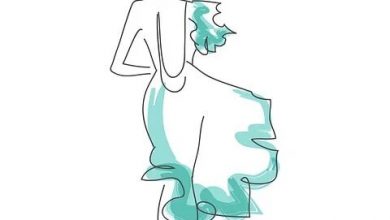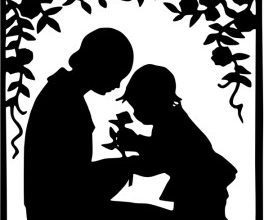Them Ducks Died for Ireland by Paula Meehan is an exploration of the hidden and forgotten side of history, which is directly linked to the environment and nature. The downtrodden side of history remains shrouded and is forgotten by the public because of the focus on the greater things, the more glorified side. Paula Meehan draws the readers’ attention to the very aspect of historical events that get buried.
Them Ducks Died for Ireland | Summary and Analysis
“6 of our waterfowl were killed or shot, 7 of the garden seats broken and about 300 shrubs destroyed.”
Park Superintendent in his report on the damage to St. Stephen’s Green, during the Easter Rising 1916
This epigraph is taken from the Irish Architectural Archive and describes the damage done to St. Stephen’s Green during the Easter Rising of 1916. Meehan draws inspiration from this epigraph for her poem.
Time slides slowly down the sash window
puddling in light on oaken boards. The Green
is a great lung, exhaling like breath on the pane
the seasons’ turn, sunset and moonset, the ebb and flow
of stars. And once made mirror to smoke and fire,
a Republic’s destiny in a Countess’ stride,
the bloodprice both summons and antidote to pride.
When we’ve licked the wounds of history, wounds of war,
we’ll salute the stretcher bearer, the nurse in white,
the ones who pick up the pieces, who endure,
who live at the edge, and die there and are known
by this archival footnote read by fading light;
fragile as a breathmark on the windowpane or the gesture
of commemorating heroes in bronze and stone.
The poem is constructed in the form and tone of an elegy, commemorating the sacrifice of the greenery and the landscape. This presents this aspect of history in a humorous manner but talks about the more serious concerns of society, the global environmental issues. Paula Meehan centres the conversation around regionality and the intersection of global situation and locality, especially when it comes to regional politics and the international deterioration of nature. Meehan’s poetry originates from a personal and autobiographical space, as she talks about her earliest and some of the best memories situated in the lap of nature. This posits an important subject for her poetry as her memories conflict with the nefarious disposition of the multinational companies that refuse to care about local matters or even transnational environmental issues, but focus on the capital market instead. Meehan’s poetry, in this light, provides an insight into the roots of this situation by diving into the natural.
In this poem, through the pedestalization of this issue, Meehan is commenting on the ironic nature of how the public memorialised the political leaders and the sacrifice of soldiers in military matters while forgetting the foundation of their lives, which is directly linked to nature and healthy environment, that these leaders are themselves polluting. This turns this silly poem full of simple humour into a powerful satire of global politics.
For Eavan Boland, poetry has a vertical audience. The same could be said for our historic parks and structures, which have sustained generations of people and have stood as witnesses to important historical events. For the Irish writer Boland, the place is situated within the framework of literary history and is shaped by the works produced over time. A geographical space holds memories over a larger period of time than a political skirmish does. A war happens on the same ground that holds peaceful residents. Even a park may have held centuries of violence or centuries of peace. Nature observes all and stands witness to every major political happening, and in turn, holds the impact of such events. Meehan explores this concept of space and nature as the ones that sacrifice the most, yet are not recognized for such, and thus, do not get the attention and healing they require.
In the lines “die there and are known / by this archival footnote read by fading light”, Meehan explores the rapidity with which memories are erased into the oblivion from the public’s mind. The footnotes these people, the ones who exist on the edge of such events, the ones who repair and pick up the pieces, are relegated to, are the marginal space that they occupy. This marginal space is deprived of their voice, instead, they are relegated to the fringes of people’s memories.
Meehan presents a desire to provide a voice to all those silent stories that are suppressed under largely acknowledged historical narratives in “Them Ducks Died for Ireland.” The poem, which is set in the aftermath of the Easter Rising in 1916, is based on the Park Superintendent’s report, which was made after he saw the extensive damage that had been done to St. Stephen’s Green during the uprising: “6 of our waterfowl were killed or shot, 7 of the garden seats were broken, and about 300 shrubs were destroyed”. After taking a close look at this report, the reader is encouraged to take a look outside, toward Stephen’s Green and muse on those other realities that are frequently overlooked in heroic portrayals of the Easter Rising and relegated to the footnotes of history books.
Meehan emphasises the difference between commemoration by the public and their forgetfulness. In the face of those “commemorating [male] heroes in bronze and stone,” the narratives of the nurses and those who picked up the pieces of the park that had been devastated hold no strength and are forgotten. This poem highlights the extensive gaps and harmful oversimplifications in the historical accounts while also demonstrating how nationalism’s exclusivist concerns have led it to ignore the “unheroic” tales of more common Irish men and women. St. Stephen’s Green is imagined as a location that has experienced a wide range of realities. This in turn highlights the diverse and layered lifestyles of Irish men and women as well as the ones who speak multiple languages, as opposed to the uniform nature of the Irish Republic that was fought for during the Easter Rising of 1916.


